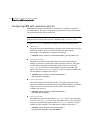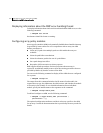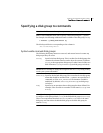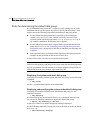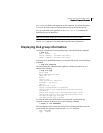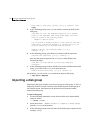
167Creating and administering disk groups
Specifying a disk group to commands
Specifying a disk group to commands
Note: Most VxVM commands require superuser or equivalent privileges.
Many VxVM commands allow you to specify a disk group using the -g option.
For example, the following command creates a volume in the disk group, mktdg:
# vxassist -g mktdg make mktvol 5g
The block special device corresponding to this volume is:
/dev/vx/dsk/mktdg/mktvol
System-wide reserved disk groups
The following disk group names are reserved, and cannot be used to name any
disk groups that you create:
bootdg Specifes the boot disk group. This is an alias for the disk group that
contains the volumes that are used to boot the system. VxVM sets
bootdg to the appropriate disk group if it takes control of the root
disk. Otherwise, bootdg is set to nodg (no disk group; see below).
Caution: Do not attempt to change the assigned value of bootdg. Doing so may
render your system unbootable.
defaultdg Specifies the default disk group. This is an alias for the disk group
name that should be assumed if the -g option is not specified to a
command, or if the VXVM_DEFAULTDG environment variable is
undefined. By default, defaultdg is set to nodg (no disk group;
see below).
nodg Specifies to an operation that no disk group has been defined. For
example, if the root disk is not under VxVM control, bootdg is set
to nodg.
Note: If you have upgraded your system, you may find it convenient to continue
to configure a disk group named rootdg as the default disk group (defaultdg).
There is no requirement that both defaultdg and bootdg refer to the same
disk group, nor that either the default disk group or the boot disk group be
named rootdg.




